\”
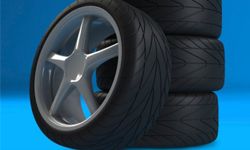
Shopping for new tires may not be the most interesting part of owning a car, but there are some basics that everyone should know when looking for new tires. For instance, do you know that some tires can actually save you money on gas? Or that some tires are rated for slower speeds while others can be driven at sustained speeds more than150 miles per hour (241.4 kilometers per hour)? Some tires are simply made just to get you safely from point A to point B, while others can handle a lot more in between those two points.
Over the next few pages, we\’ll take a look at some of the key aspects of tires (in no particular order), and what to look for when you\’re ready to purchase a new set.
Contents
5: Features
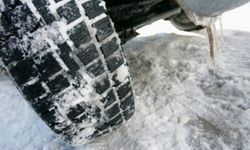

Tires, just like the cars that sit on them, can come fully loaded with features. Some tire manufacturers claim their tires can reduce the amount of stopping distance for your car, others aim to increase your car\’s fuel economy and some can be used safely even after they\’ve been severely punctured. But even if you\’re just looking to replace your tires with another set matching the factory specifications, it\’s good to know the types of features available.
Most drivers purchase the all-season tire, which may not increase your car\’s miles per gallon, but will grip the road and perform well in most driving conditions, especially in dry weather [source: ConsumerSearch]. If you\’re looking for something that can handle more extreme conditions, you can purchase tires for your vehicle that are designed for exceptional traction on wet roadways or on snow- and ice-covered roads. Snow tires sometimes have a severe weather icon on the sidewall, usually a mountain with a snowflake inside, and they offer even more traction than a typical all-season tire [source: TireRack]. Regardless of the tires you decide to purchase, do some research on which type of features you want in a tire and determine the features that work best for you and your specific driving needs.
Up next, how long should your new tires last?
4: Longevity
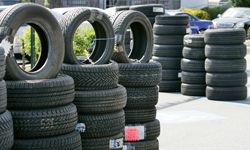

When purchasing new tires, it\’s important to know about how long you can expect them to last. Although tire manufacturers provide estimates on how many miles the tread is good for, tire longevity can be impacted by factors such as the elevation of the place they\’re driven, how curvy the roads are and if they\’re used in cold or hot climates. For all-season tires, the tread-life longevity is typically between 40,000 and 100,000 miles (64,374 and 160,934 kilometers) [source: ConsumerSearch]. High-performance all-season tires will only last from 40,000 to 70,000 miles (64,374 to 112,654 kilometers) and top-performance tires are sold without a guarantee on the tread life and usually don\’t last more than 25,000 miles (40,234 kilometers) [source: Motor Trend]. When you\’ve determined the types of features you\’re looking for in a tire, consider how long you\’d like the tires to last, and try factoring in if your commute could negatively impact the longevity of the tire tread.
On the next page, we\’ll take a look at how size is an important part of the tire-buying process.
3: Size


This is an obvious one, but you really do need to know what the size of your factory tire is, and what size tire the wheel can take. Vehicle manufacturers design suspension and handling components with the factory wheel and tire size in mind. Changing the size of the tire can affect how your vehicle performs and handles [source: Motor Trend]. If you\’re looking to add a larger size tire, take a look at your car\’s owner\’s manual first to see the manufacturer specifications and recommendations. If you\’re making a drastic change in tire size, consult a tire expert before you do anything to find out how your vehicle may be affected. And remember: What looks good in the showroom may not be the best for your car\’s on-road handling, suspension components or turning radius.
On the next page we\’ll review speed ratings for tires.
2: Speed Rating
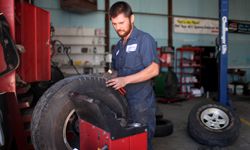

Yes, tires are rated by how fast they can go. Factory specifications will usually tell you what type of tire your car should have. There are performance tires available that are still able to perform in all-season conditions, so you don\’t necessarily have to trade one for the other. These will have a rating on the side of the tire ranging from H to V and will provide better handling and a grip on the road, without the compromise of losing all-weather capability. High-performance tires on the other hand, sacrifice use in icy and snowy conditions, in order to provide the best in performance during wet and dry conditions. These tires will have a rating of V, W, Y, or Z. These tires are capable of sustaining speeds of 149 to 186 miles per hour (239.8 to 299.3 kilometers per hour), depending on the speed rating letter [source: ConsumerSearch]. Although high-performance tires will work well at lower speeds, too, keep in mind that the more performance-oriented a tire is, the shorter the expected tread life will be.
Coming up, we\’ll take a look at one the most important factors when considering a new tire: the price.
1: Price
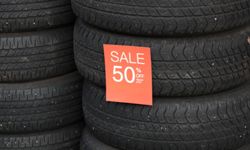

As with all car-related purchases, price can be a factor in determining what type of tire you purchase and where you purchase it from. There are plenty of online options, but be sure to find out how much it costs to have your tires installed locally before you buy them online. Your local tire shop may not only charge you for mounting and balancing the tires, but may add in a few extra fees as well [source: Reed]. If you do decide to buy online, ask around at local tire shops to find out which ones will agree to do the work and how much they\’ll charge to put them on your car. If you choose buy tires from a brick-and-mortar store, keep in mind that not all tire shops carry the same brands and types of tires, so shop around until you\’ve found the specific tire you\’re looking for and the price you\’re willing to pay.
For more information about tires and other related topics, follow the links on the next page.
Lots More Information
Related Articles
- 5 Warning Signs You Need New Tires
- Car Smarts: Tires
- How Tires Work
- How Q Tires Work
- How Self-inflating Tires Work
- How Self-regenerating Tire Tread Works
- How the Tweel Airless Tire Works
- What is an eLSD?
- Curiosity Project: How do you attach a new car tire?
Sources
- ConsumerSearch. "Tires: What to Look For." February 2010. (July, 28, 2010)http://www.consumersearch.com/tires/important-features
- Motor Trend. "Tire Basics." April 2005. (July 29, 2010)http://www.motortrend.com/womt/112_0504_tire_basics/index.html
- Reed, Philip. "Confessions of a Tire Salesman." Edmunds.com. (July 30, 2010)http://www.edmunds.com/ownership/maintenance/articles/162886/article.html
- TireRack. "How to Confirm a Winter Performer." (July 30, 2010)http://www.tirerack.com/winter/tech/techpage.jsp?techid=125












